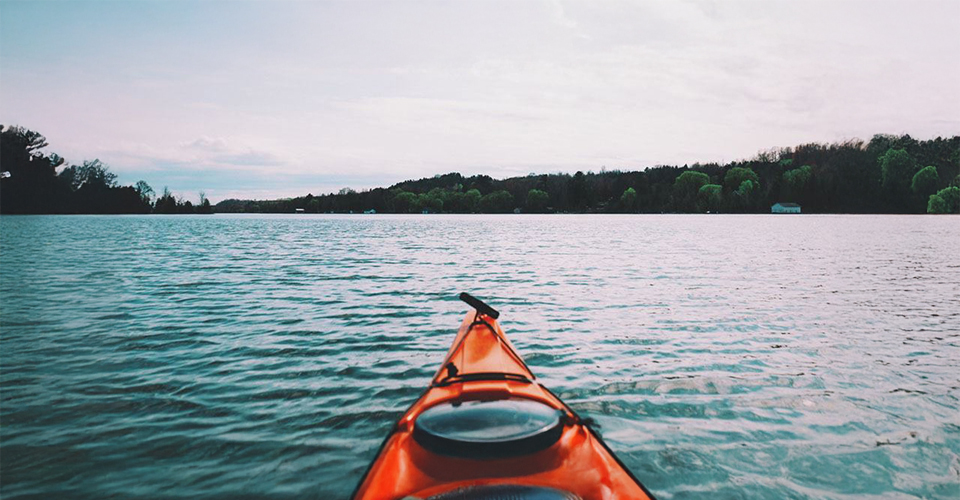 Nothing quite beats a summer day out on the lake, except if your canoe or kayak doesn't make it to your new waterfront property in one piece. Moving can be costly, but odds are so was your canoe or kayak. The last thing you want is any damage happening to your boat during the process of moving. Learn how to transport a canoe or kayak to your new home, so you can enjoy using it for years to come.
Nothing quite beats a summer day out on the lake, except if your canoe or kayak doesn't make it to your new waterfront property in one piece. Moving can be costly, but odds are so was your canoe or kayak. The last thing you want is any damage happening to your boat during the process of moving. Learn how to transport a canoe or kayak to your new home, so you can enjoy using it for years to come.
Moving your canoe/kayak in a safe and effective manner isn't difficult. Follow these crucial tips so you're not up a creek without a paddle.
How to ship a canoe or kayak through a carrier
Contact the manufacturer of your boat, or the store you purchased it from, to see if they can give you suggestions on services they have used in the past. Many boat owners strongly advise against using common carriers, because their employees are not trained to move canoes or kayaks.
If the movers use a forklift, the canoes and kayaks can end up punctured. There are also plenty of horror stories about kayaks and canoes getting lost for days on loading docks. If you do decide to use a common carrier, your best option would be to wrap the canoe or kayak yourself, using extra packing to protect it from any perforation or dents.
-
While they are generally lighter than a typical boat, standard carriers such as FedEx or UPS classify canoes and kayaks as oversized items. The freight class of a canoe varies, as this number is based on density (pounds per cubic inch), but canoes usually fall somewhere between 50 and 60. For kayaks, this number depends on the size and the material.
-
Find an alternate shipping agency or freight carrier that specializes in handling canoes, kayaks and similar items. Sometimes, these companies can charge even less than standard shipping companies while ensuring that your canoe or kayak is handled by trained professionals.
-
No matter which shipping agent you choose, call ahead to schedule a pickup time.
-
When you call, you should also find out whether the shipping company has any rules or regulations for shipping a canoe/kayak, so that if you are packaging it yourself, you can do so properly.
-
While cost varies considerably depending on the carrier, you can expect to pay approximately $200 to $300 to ship your canoe/kayak over 2,000 miles. However, if your relocation is local, and you will be traveling in a vehicle that is equipped to hold larger items, move it yourself.
-
Don't sign the bill of landing until you have inspected your canoe or kayak. Once the bill of landing is signed, the shipping company is not responsible for any damage that may have happened during transportation.
Packing and moving your canoe yourself
Not only is packing your canoe or kayak yourself more economical, it will give you the peace of mind that your boat will make it to your destination in one piece.
-
Gently set your canoe or kayak down on the ground and fill the inside with foam or a similar packing material. Tightly pack the peanuts and pieces of foam underneath the seats and between the struts. This will help balance the weight and protect it from becoming dented or cracked during transit.
-
The particular method of wrapping the canoe or kayak is up to you, but you will want at least three layers thick of bubble wrap. You can either wrap the boat like a mummy with from the front to the back or start with the perimeter of the boat followed by the top.
-
Use a strong adhesive, such as duct or electrical tape, to seal the ends of the bubble wrap and to make sure it stays in place around the boat.
-
In the same manner you encase the boat with bubble wrap, bind it with three layers of plastic sheeting or shrink-wrap. Tape together at either end.
-
For reinforcement, apply a few more layers of tape around the canoe or kayak, spacing the tape approximately five inches apart in strips.
-
You will also need a good amount of sturdy rope or bungee cords to fasten the boat, upside down, to the roof of your vehicle. If you have a roof rack, you can loop the rope and bungee cords through the rack and back up over the canoe or kayak and hook the cords in place. Repeat this several times to ensure that the boat is tightly fastened to your vehicle.
If packed properly, your canoe/kayak will arrive at your new home ready for the water.